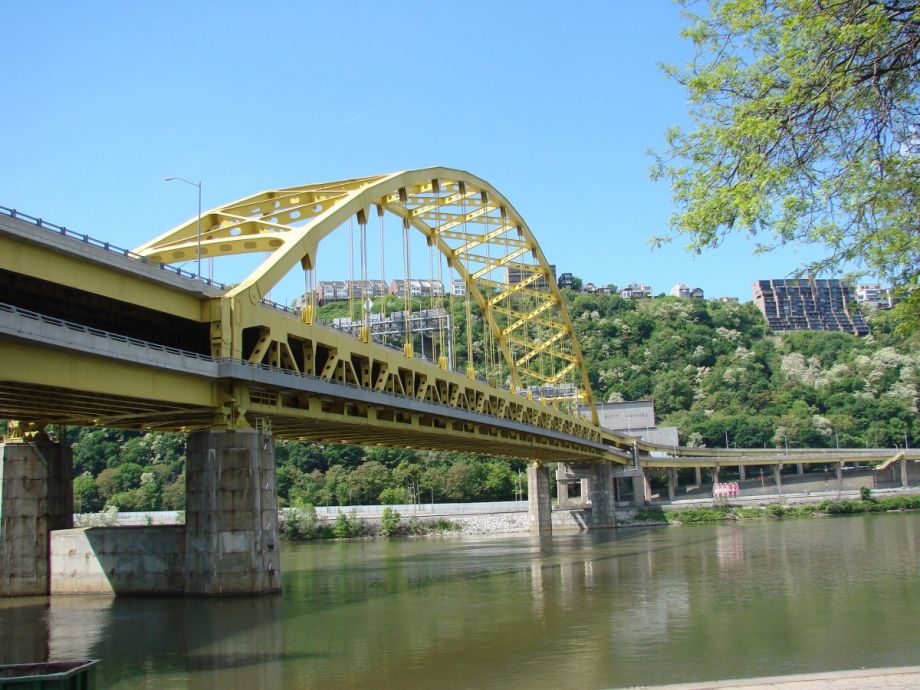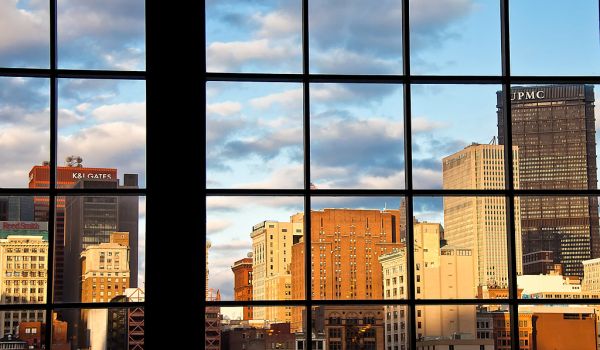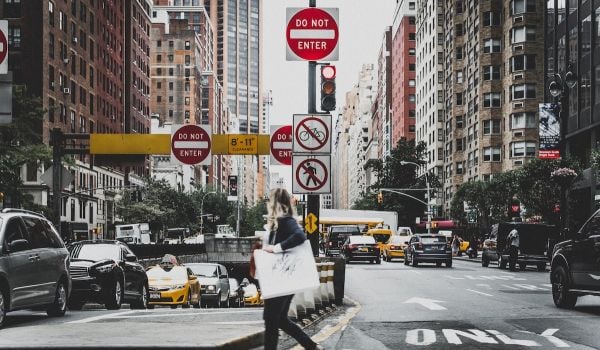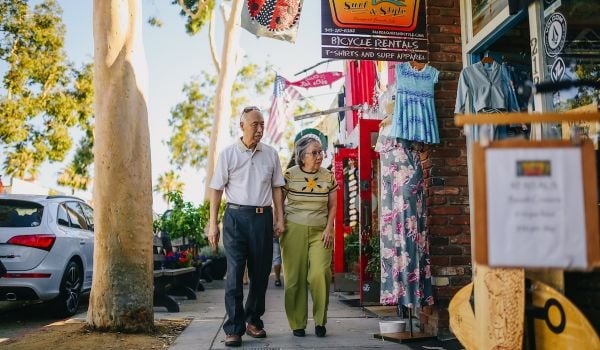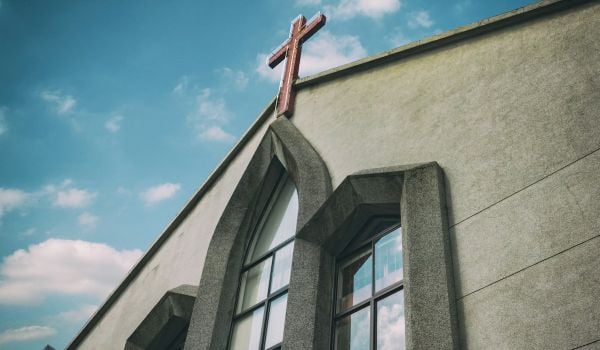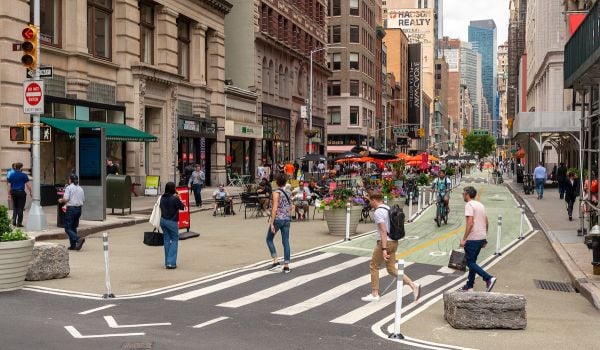Liberty Avenue is the western gateway to downtown Pittsburgh. It is also a dangerous headache of a road that’s not really working for anybody on it. As you come off the Fort Pitt Bridge and cruise between Commonwealth Place and Stanwix Street, there are spots for drivers to U-turn, side roads merging in, bicyclists running red lights, jaywalking pedestrians and a light-rail station that exits onto an island in the road. A group of stakeholders and streets advocates think they’ve got the solution: Get rid of all the signs, signals, curbs, lane markings and crosswalks for one city block.
This roadway free-for-all is called a shared street and, according to some, is much safer for all users than regular streets. The theory — pioneered in the early ’90s by Dutch traffic engineer Hans Monderman — is that creating a greater sense of uncertainty by eliminating a clear sense of right-of-way forces people to slow down and pay more attention to what they’re doing.
“Over time cities have been realizing big wide roadways through an urban area like Pittsburgh just don’t work,” says Robert Ping, technical assistance program manager at Washington-based nonprofit Walkable and Livable Communities Institute. “The slower people go, the nicer they act.”
Ping was part of a recent design charrette with over 40 stakeholders organized by the Pittsburgh Downtown Partnership (PDP) and AARP to address the problematic section of Liberty Avenue. The charrette was part of Pittsburgh Mayor Bill Peduto’s Envision Downtown program that’s working to reshape downtown public space with placemaking pilot projects.
“[Liberty] is a very designed street. There have been a lot of attempts to make it function well for vehicles,” explains Jeremy Waldrup, president and CEO of PDP. “We want to slow things down and create a really pedestrian-friendly environment. That’s where [the charrette] conversation turned to shared street.”
Pittsburgh drivers currently treat Liberty as a through route. One key part of creating a shared street’s comfortable, safe pedestrian environment is getting drivers to choose other routes.
Ping says, “People take the shortest path through downtown, but they don’t need to. They can take these major roads on the edges, then drop into side streets or bypass downtown all together. We need to encourage and engineer drivers to avoid downtown.”
Beyond making Liberty safer for pedestrians, bicyclists and drivers, Waldrup says they hope the plan breathes a little life into the neighborhood’s businesses. “There’s not currently a lot of retail activation. Nobody really walks into this campus-like area unless you’re going into one of the buildings. A [shared street] enlightens folks that this is a really great asset.”
If Waldrup and his fellow stakeholders can successfully implement a shared street, it will be one of just a handful of examples in the U.S. versus hundreds in Europe. Savannah, West Palm Beach and Cambridge have examples of streets that follow the shared space design principles. Chicago has plans to convert Argyle Street into a shared street this year.
Though not exactly a shared street, Pittsburgh already has a pedestrian-centric space called Market Square. Waldrup and Ping are hoping it will help residents wrap their head around their proposal.
“Market Square is curbless. It has a cobbled street. There’s this flow of people moving in and out of this square into restaurants with big wide patios,” says Waldrup. “People can look at Market Square and see that well-designed spaces are at capacity. Everything there is leased up. You can’t even get a table down there at lunch. And six years ago it had buses going right through it.”
Nonetheless (and perhaps unsurprisingly), the idea has still received a lot of criticism over the last few weeks. Waldrup says diplomatically, “There has been a very interesting discussion about the concept of shared space and people have had very strong reaction to it.”
In addition to drivers, the idea is likely to garner criticism from visually impaired people and wheelchair users.
On its website, the National Council for the Blind of Ireland explains that a shared street “places the emphasis on eye contact and person-to-person negotiation between those using the space to decide on right of way. This creates an obvious barrier for people who are blind or have low vision, who may not be able to see drivers and cyclists to engage in this kind of negotiation.”
In addition, the standard of removing curb separation can create problems. NCBI notes that “people who use a long cane or guide dog find it impossible to travel safely and independently, as it is very hard to locate where the footpath ends and the road begins.”
For people in wheelchairs, the cobbles and paver stones often used on shared streets can make it difficult to roll.
Ping says shared street designers have started to grapple with these potential issues. “Shared spaces in the U.S. and Europe are using things like street texture, and small curbs, and street furniture to help people with visual impairment figure out where they are … you can also create channels through pavers for folks in wheelchairs.”
Pittsburgh’s shared street idea is still in its earliest stages. As is the case with most infrastructure projects, Waldrup thinks funding and public support will be challenging hurdles. But, he says the project fits into the city’s broader goals to remake downtown.
“Downtown has seen a tremendous amount of reinvestment. We have about $2.2 billion in active and announced projects on top of $3.1 billion that’s been invested in the last nine years or so.”
The Works is made possible with the support of the Surdna Foundation.

Josh Cohen is Crosscut’s city reporter covering Seattle government, politics and the issues that shape life in the city.
Follow Josh .(JavaScript must be enabled to view this email address)


